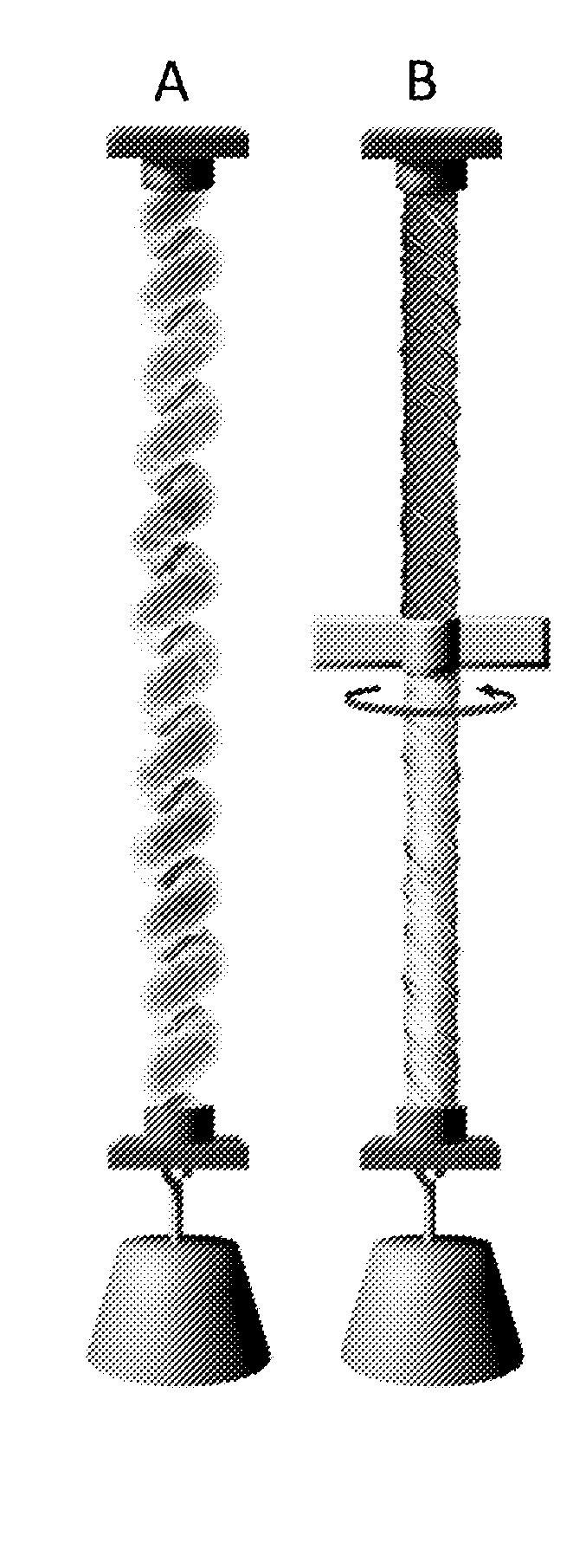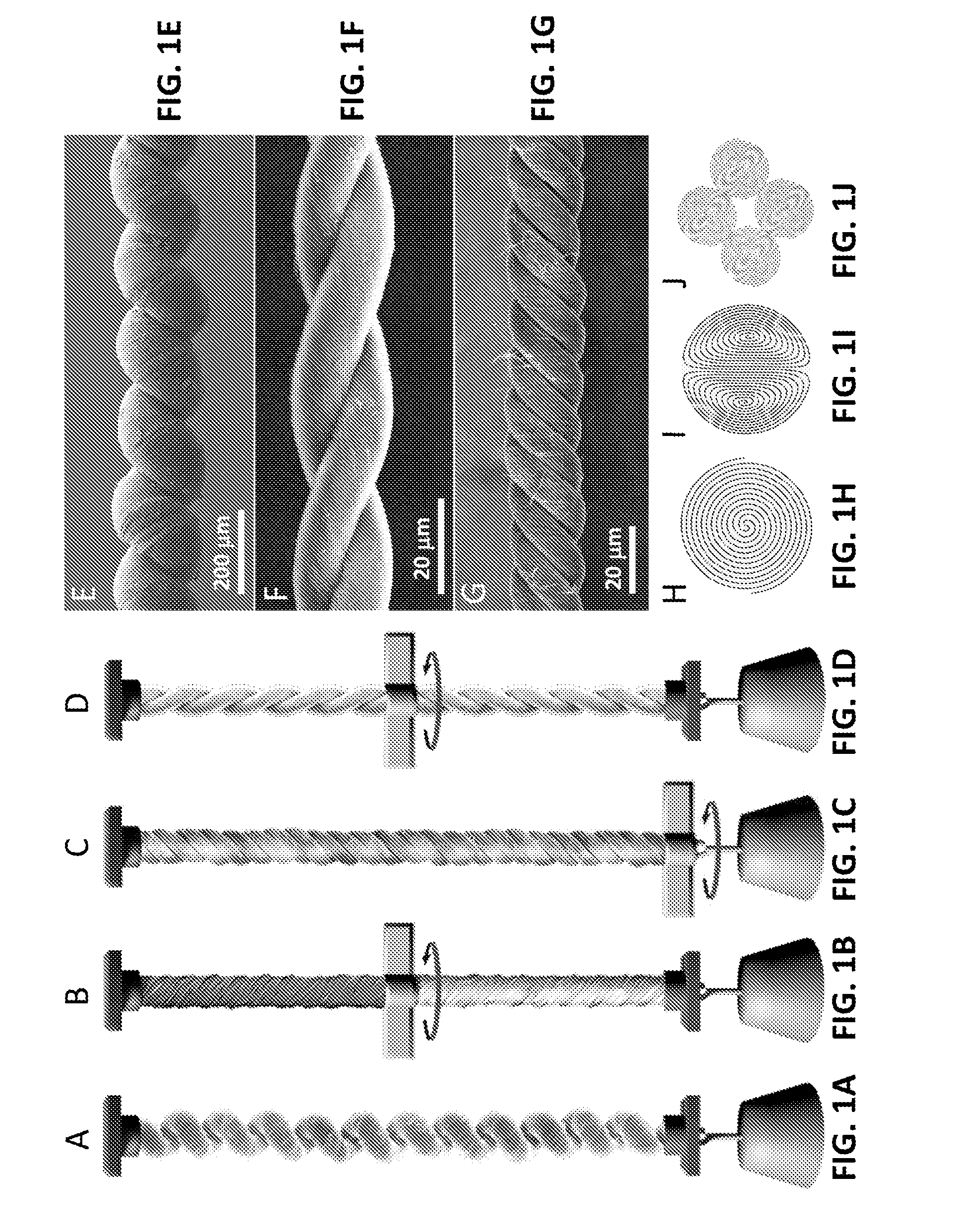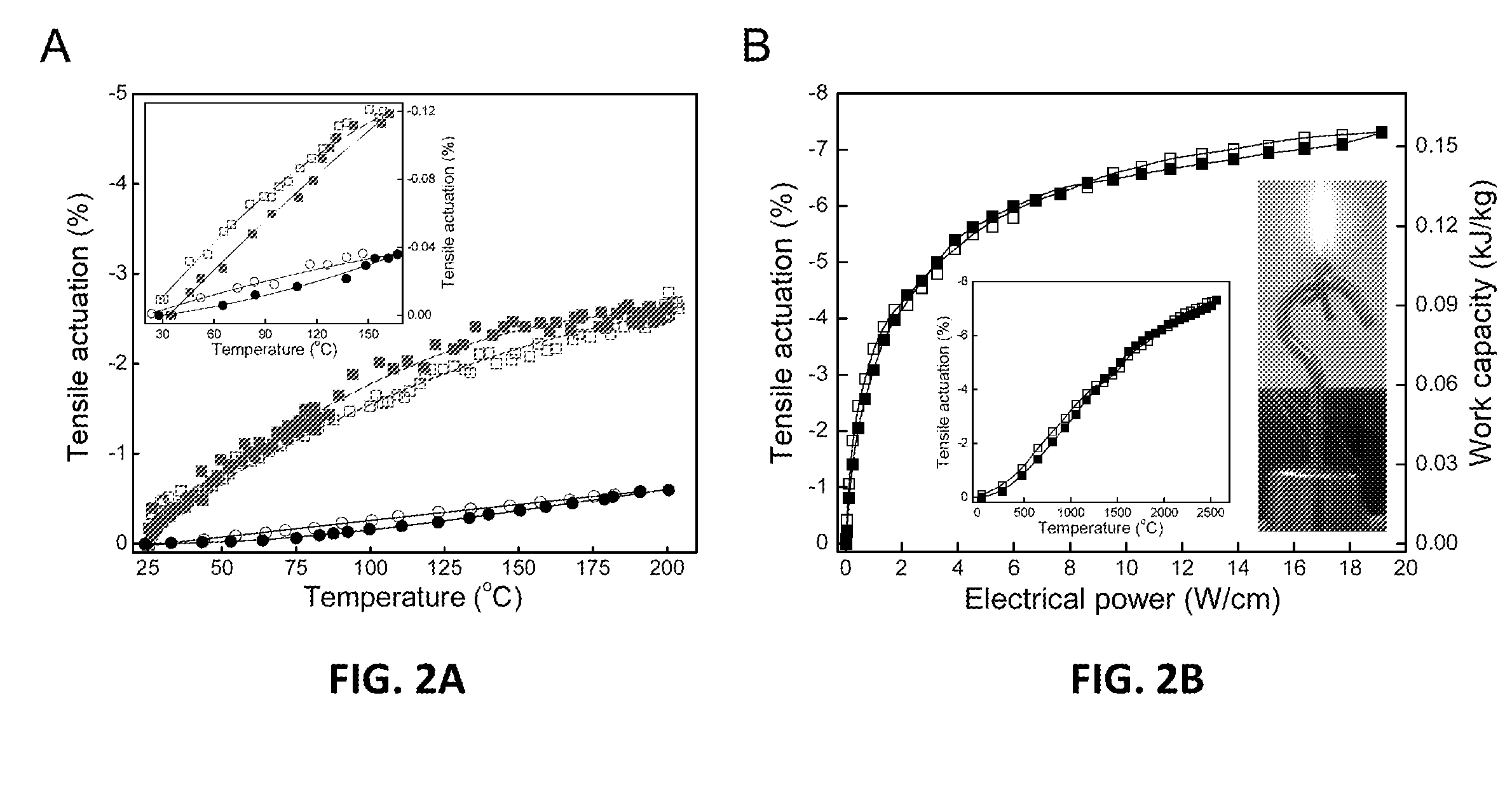Coiled and non-coiled twisted polymer fiber torsional and tensile actuators
a technology of torsional and tensile actuators and polymer fibers, which is applied in the direction of motors, machines/engines, and joints, etc., can solve the problems of humanoid robots lacking critical needed capabilities, most advanced prosthetic limbs, exoskeletons, etc., and the above described carbon nanotube artificial muscles are limited
- Summary
- Abstract
- Description
- Claims
- Application Information
AI Technical Summary
Benefits of technology
Problems solved by technology
Method used
Image
Examples
example 1
[0207]This Example 1 described the fabrication of yarn muscles containing paraffin wax guest. Though we obtained similar results for other commercially obtained waxes (like those used for canning and candles), unless otherwise indicated the described results are for a wax more likely to be readily available to future researchers (Sigma-Aldrich 411671 wax), which comprises a mixture of alkanes. Results in Section 3 show that this wax fully melts at ˜83° C., expands by ˜20% between 30 and 90° C. during solid-state transitions and melting, and provides ˜10% additional volume expansion between 90 and 210° C.
[0208]MWNT yarns were typically infiltrated with paraffin wax using the “hot wire method”, wherein a two-end-tethered, twist-spun yarn, under constant tensile load was electrically heated to above the melting point of the paraffin wax and then contacted with a small amount of solid paraffin. Upon touching the heated yarn with flakes of solid paraffin or droplets of molten paraffin, t...
example 2
[0209]This Example 2 described the fabrication of yarn muscles containing polydiacetylene guest. The utilized diacetylene (DA) was 10,12-pentacosadiynoic acid [CH3(CH2)11C≡C—C≡C(CH2)8COOH], which was purchased from Alfa Aesar Co., Ltd and used as received. An as-spun, two-end-tethered, Fermat yarn (9 μm in diameter, with 20,000 turns / m of inserted twist) was first immersed in 8 M DA tetrahydrofuran solution for an hour, and then the DA infiltrated yarn was removed from the solution and dried overnight at room temperature while maintaining tethering. UV light (254 nm from a 30 W UV lamp) was used to in situ polymerize the DA into a polydiacetylene (PDA). The polymerization time was typically around 3 minutes, which caused the yarn to develop a dark blue color. However, polymerization was incomplete, in part because nanotube and diacetylene absorption prevents deep penetration of the UV light inside the yarn.
example 3
[0210]This Example 3 described the fabrication of a hybrid yarn muscles containing polyethylene glycol guest. Polyethylene glycol (PEG), H(OCH2CH2)nOH, with an average molecular weight of 6000 and a melting temperature range of 60 to 63° C., was obtained as flakes from Sigma Aldrich (Bio-Ultra 6000) and used as received. The PEG was infiltrated into the lower half of a 13 μm diameter Fermat yarn (containing 15,000 turns / m of inserted twist) by immersion of this yarn segment in a molten bath of PEG for 30 minutes at about 100° C. Then the two-end-tethered yarn was removed from the PEG bath and allowed to cool to room temperature. The diameter of the PEG-filled yarn segment was 17 μm and the bias angle was 31°.
PUM
| Property | Measurement | Unit |
|---|---|---|
| temperatures | aaaaa | aaaaa |
| diameter | aaaaa | aaaaa |
| diameter | aaaaa | aaaaa |
Abstract
Description
Claims
Application Information
 Login to View More
Login to View More - R&D
- Intellectual Property
- Life Sciences
- Materials
- Tech Scout
- Unparalleled Data Quality
- Higher Quality Content
- 60% Fewer Hallucinations
Browse by: Latest US Patents, China's latest patents, Technical Efficacy Thesaurus, Application Domain, Technology Topic, Popular Technical Reports.
© 2025 PatSnap. All rights reserved.Legal|Privacy policy|Modern Slavery Act Transparency Statement|Sitemap|About US| Contact US: help@patsnap.com



